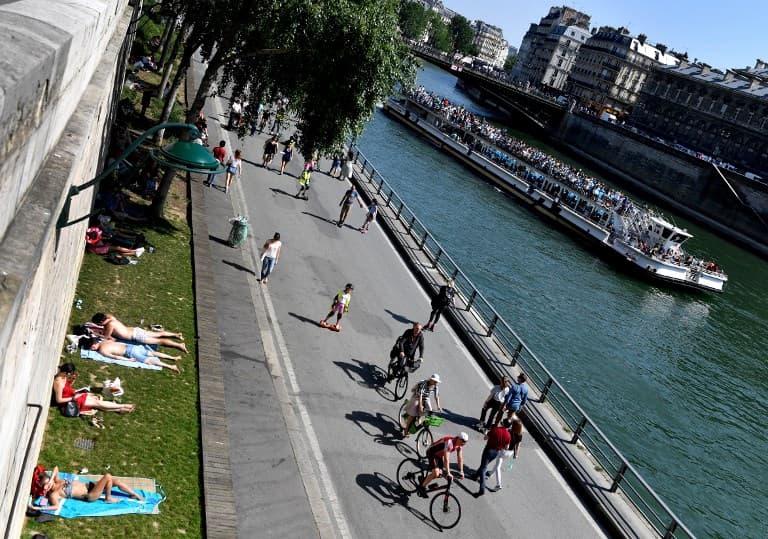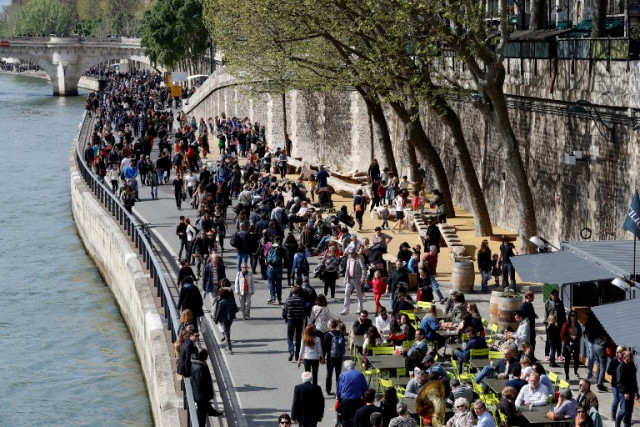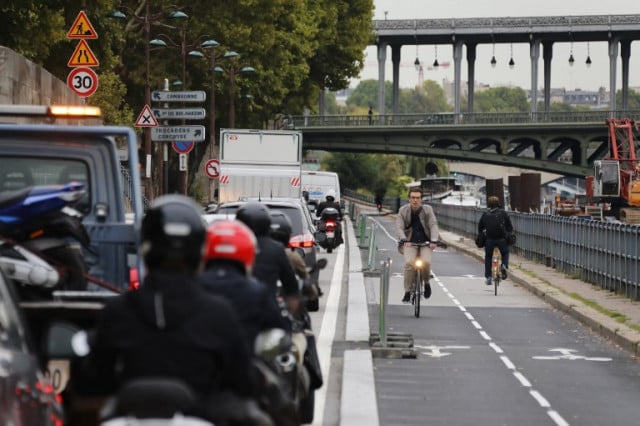French court gives green light to cars on Seine riverbanks

A French court has ruled (once again) that cars should be allowed to use the Seine riverbanks which the Paris mayor pedestrianized in her push to make the French capital more green.
The Administrative Court of Appeal in Paris confirmed on Monday that it had cancelled the pedestrianization of the River Seine’s right bank, and with it the appeal by Paris mayor Anne Hidalgo to keep it as a walkway for strollers and cyclists.
Bike-sharing and car-free riverbanks were supposed to be the flagships of Mayor Anne Hidalgo's pledge to tackle smog in the French capital, which can get so bad that children's football matches are cancelled.
But in this latest appeal in the saga which has been dubbed a "soap opera" by the French press, the Paris Court of Appeal found that City Hall had “deliberately withheld a significant part of the project's impact on air pollutant emissions and noise pollution".
It went on to criticize Hidalgo and her team for having "limited the analysis of the effects on pollution to just a narrow band around the Seine’s banks, without studying the impact on the rest of the city".

The story began in October 2016 when a municipal decree gave Hidalgo permission to transform the right bank highway into a pedestrianized area in central Paris.
But in February 2018, the landmark 2016 ruling was overturned by Paris’s Administrative Court, after deciding it was based on a study that contained "omissions and inexact information" concerning the consequences of pedestrianizing the right bank.
It was stated that while Parisians and tourists may enjoy walking along the river without the presence of cars speeding along the Georges-Pompidou Express way, motorists groups and authorities in the suburbs were suffering from traffic problems and pollution elsewhere in the capital as a result.

And the move infuriated the roughly five million drivers who commute to Paris, who scoffed at Hidalgo's claims that road closures would encourage them to use public transport -- an impractical option for many living in the suburbs.
A committee set up to evaluate the plan's effects found in November that there had been no meaningful decline in traffic, while jams on nearby routes had increased rush-hour travel times by up to 70 percent.
"The reality is that 30 more minutes are being lost during rush hour," said Pierre Chasseray of the 40 Million Drivers advocacy group, which has denounced Hidalgo's "misguided ecological utopia".
Hidalgo rushed out another decree after the court ruling to keep the riverside roads closed, citing a poll which found 55 percent of Parisians in favour of the measure and vowed to fight the ruling.
Deputy Paris mayor Emmanuel Grégoire has reacted to the results of the latest appeal by calling the ruling “comical” as it relied on an impact study which he claimed was deemed “discretionary”.
"We won the cultural battle on the banks of the Seine. Even our political opponents no longer demand the return of cars," Grégoire is quoted as saying by Le Parisien.
The area in question is 3.3 km long, running from the entrance of the Tuileries tunnel (1st arrondissement) to the exit of the tunnel Henri-IV (4th arrondissement).
However it is unlikely that this latest ruling will put a stop to an ongoing drama which showcases how France’s capital is struggling to juggle its traffic problem with its will to keep its city centre as a cultural hub for tourists and residents alike.
Comments
See Also
The Administrative Court of Appeal in Paris confirmed on Monday that it had cancelled the pedestrianization of the River Seine’s right bank, and with it the appeal by Paris mayor Anne Hidalgo to keep it as a walkway for strollers and cyclists.
But in this latest appeal in the saga which has been dubbed a "soap opera" by the French press, the Paris Court of Appeal found that City Hall had “deliberately withheld a significant part of the project's impact on air pollutant emissions and noise pollution".
It went on to criticize Hidalgo and her team for having "limited the analysis of the effects on pollution to just a narrow band around the Seine’s banks, without studying the impact on the rest of the city".

The story began in October 2016 when a municipal decree gave Hidalgo permission to transform the right bank highway into a pedestrianized area in central Paris.
But in February 2018, the landmark 2016 ruling was overturned by Paris’s Administrative Court, after deciding it was based on a study that contained "omissions and inexact information" concerning the consequences of pedestrianizing the right bank.
It was stated that while Parisians and tourists may enjoy walking along the river without the presence of cars speeding along the Georges-Pompidou Express way, motorists groups and authorities in the suburbs were suffering from traffic problems and pollution elsewhere in the capital as a result.

Hidalgo rushed out another decree after the court ruling to keep the riverside roads closed, citing a poll which found 55 percent of Parisians in favour of the measure and vowed to fight the ruling.
Deputy Paris mayor Emmanuel Grégoire has reacted to the results of the latest appeal by calling the ruling “comical” as it relied on an impact study which he claimed was deemed “discretionary”.
"We won the cultural battle on the banks of the Seine. Even our political opponents no longer demand the return of cars," Grégoire is quoted as saying by Le Parisien.
The area in question is 3.3 km long, running from the entrance of the Tuileries tunnel (1st arrondissement) to the exit of the tunnel Henri-IV (4th arrondissement).
However it is unlikely that this latest ruling will put a stop to an ongoing drama which showcases how France’s capital is struggling to juggle its traffic problem with its will to keep its city centre as a cultural hub for tourists and residents alike.
Join the conversation in our comments section below. Share your own views and experience and if you have a question or suggestion for our journalists then email us at [email protected].
Please keep comments civil, constructive and on topic – and make sure to read our terms of use before getting involved.
Please log in here to leave a comment.